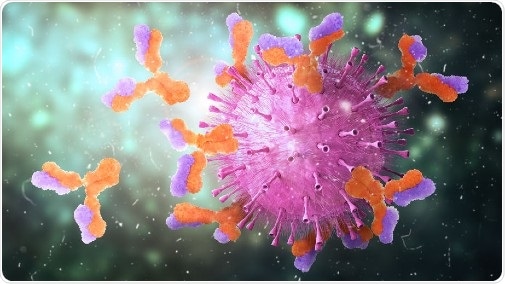A new study has revealed how immune cells migrate to the lymph nodes and help attack harmful viruses and bacteria.

Image Credit: University of York.
Headed by researchers from the University of York, the study shows how B-cells—vital agents of the immune response—encounter a dangerous path and swim through a thick network of lymphatic vessels, blood, and other cells to reach the lymph node follicles.
Important step forward
The researchers observed that structures within the lymph nodes leave a path of chemical signals that guide B-cells via these complex tissues—similar to tiny lighthouses that direct a safe shipping passage.
After the B-cells reach the lymph nodes (glands that work as filters capturing bacteria and viruses before they can infect other body parts), they confront the invading microbes and seize molecules from their surfaces called antigens. The B-cells process these antigens and present them to T cells, which subsequently produce antibodies enabling them to detect and kill the invaders.
The study brings researchers one step closer to interpret the functions of the human immune system and why it fails, explained the study’s authors.
Chemical trail
Our study suggests that B-cells sniff out a chemical trail which allows them to swim over relatively long distances in a highly complex microenvironment to reach their key destination. Relying on a single chemical transmitter to act as a beacon across the whole of the lymph node wouldn’t do the trick, since the signal becomes too dilute and swamped by noise. Instead, these multiple signals are like having a trail of breadcrumbs that the cells can follow.”
Mark Leake, Study Co-Lead Author and Professor, Department of Physics, University of York
The study may help resolve the mystery of how cells, which are 100 times smaller than a millimeter, travel across distances of about a meter to reach where they are required in the body.
Machine learning
An international research team from various disciplines, such as biophysics, immunology, computer science, cell biology, and mathematics, contributed to the study.
The researchers employed fluorescent tags on signaling molecules to follow their site in the lymph nodes of human and mice biopsy samples. The team used computer simulations and maths modeling that involve machine learning to plot the cell design of the follicles of lymph node tissues.
The only way we could gain this incredible new insight is by forming a large research team with a broad range of expertise crossing between multiple traditional science disciplines. Research into understanding the workings of the immune system at the scale of single molecules may help us to understand why things go wrong in the case of some diseases of the immune system.”
Mark Leake, Study Co-Lead Author and Professor, Department of Physics, University of York
“It may help pave the way to new drugs that help to improve the immune system’s ability to combat emerging threats from harmful viruses and bacteria that the human population has not previously encountered,” Professor Leake concluded.
Source:
Journal reference:
Cosgrove, J., et al. (2020) B cell zone reticular cell microenvironments shape CXCL13 gradient formation. Nature Communications. doi.org/10.1038/s41467-020-17135-2.